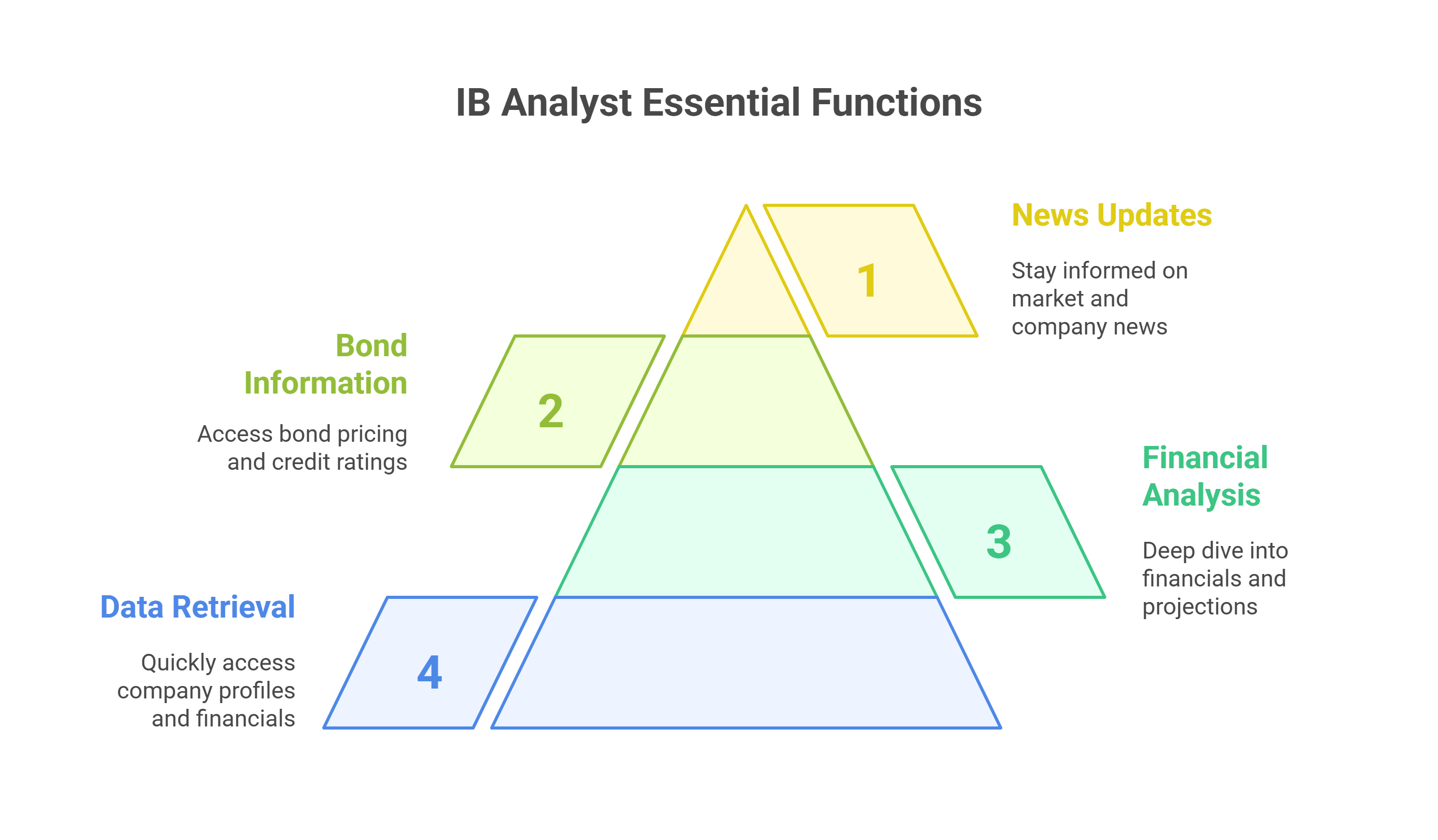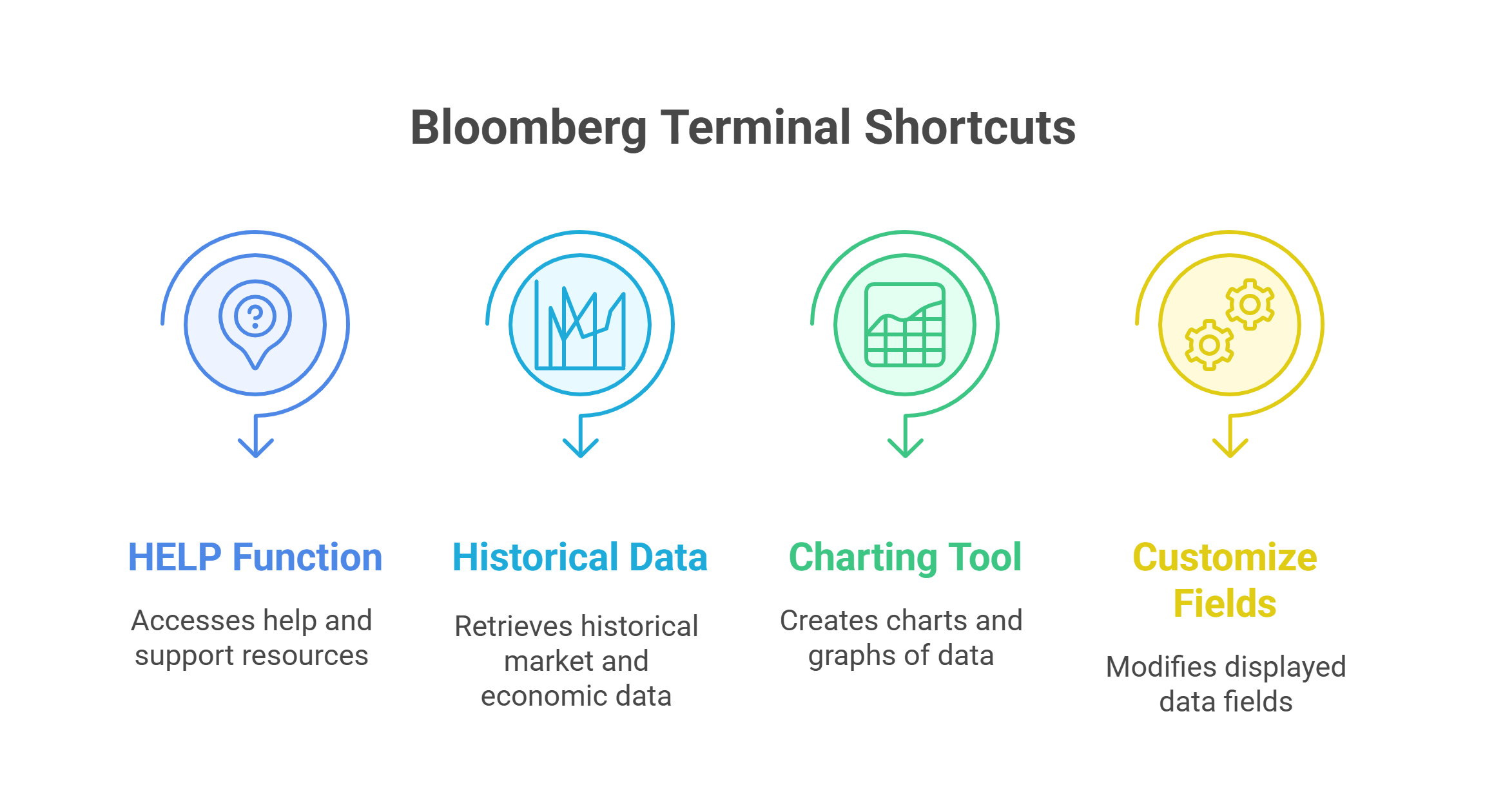The Bloomberg Terminal — that massive, dual-screen machine glowing with endless data. The first time you sit in front of it, it can feel like stepping into a cockpit of a spaceship. But for anyone dreaming of a career in investment banking, it’s more than just another tool — it’s a rite of passage.
Learning to navigate this powerful platform isn’t just helpful; it can be the difference between barely keeping up and truly excelling in the fast-moving world of finance. This guide is here to help you make sense of it all — your starting point for mastering the Bloomberg universe.
First Steps: Beyond the Green Screen
Forget the intimidation. The Bloomberg Terminal, despite its daunting interface, boils down to a sophisticated search engine. Think of it as Google on steroids, specifically designed for the financial markets. Start with the basics. The command line at the top of the screen is your gateway to everything. Typing in simple commands like {EQUITY} or {FX} opens doors to equity research and foreign exchange data, respectively.
Essential Functions for IB Analysts
As an IB analyst, your bread and butter will be financial modeling, valuation, and deal execution. Here are some key functions you'll practically live on:
- {DES} (Description): Quickly pull up company profiles, financial statements, and key statistics. I remember pulling all-nighters during my first internship, fueled by coffee and {DES} screens.
- {FA} (Financial Analysis): Dig deep into a company's financials, comparing historical performance and generating pro forma projections. Essential for building your models.
- {BI} (Bond Information): Access bond pricing, yields, and credit ratings – crucial for debt-related deals. The bond market can be a jungle, but {BI} is your machete.
- {NEWS}: Stay on top of market-moving news and company-specific announcements. Being in the know is half the battle.
 Speed is Key: Mastering Shortcuts
Speed is Key: Mastering Shortcuts
Investment banking is a fast-paced world. Shaving seconds off tasks can add up to hours saved. Bloomberg shortcuts are your secret weapon. The {HELP} function is your best friend. It's not a sign of weakness; it's a smart move to leverage available resources. Learn common shortcuts like {W} for historical data, {GRAPH} for charting, and {FLDS} to customize data fields. These seemingly small things can dramatically boost your efficiency.
 Beyond the Numbers: Leveraging News and Research
Beyond the Numbers: Leveraging News and Research
Bloomberg isn’t just about crunching numbers. It's a powerful research tool. Use {NI {COMPANY NAME}} to access news specifically related to a company. Dive into analyst reports with {BRC} to understand industry trends and expert opinions. The wealth of information available can be overwhelming, so learn to filter and prioritize effectively.
Staying Ahead of the Curve: Advanced Functions
As you gain experience, explore more advanced functions like building custom screens with {BLP} or creating alerts with {ALERT}. Imagine receiving a notification the moment a stock hits a certain price target. These advanced tools can give you a serious edge.
Conclusion: From Novice to Navigator
The Bloomberg Terminal isn't something you master overnight. It’s a journey of continuous learning. Embrace the complexity, be curious, and don’t be afraid to experiment. With practice and persistence, you'll go from feeling lost in a sea of data to confidently navigating the financial markets like a seasoned pro. And trust me, that confidence will pay off.
















